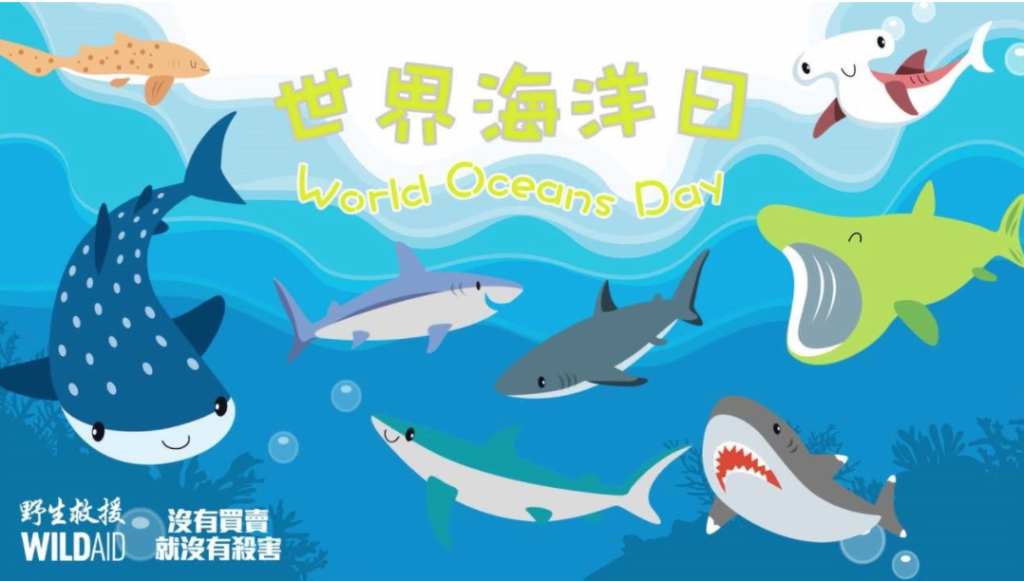
WildAid works with talented design, animation and video teams around the world to help us produce our campaigns.
Over the past five years, WildAid has worked with ALBM in Hong Kong to produce several PSAs to raise public awareness of the impacts of buying and consuming wildlife products.
We invited Edde Ngan, Creative Director at ALBM to write the following blog about the design team’s passion for wildlife conservation and their thinking about the visuals they use to promote our campaign key messages.
We really like WildAid’s slogan – When the Buying Stops, the Killing Can Too 沒有買賣 就沒有殺害. Through our work, we hope to inspire others to protect and conserve wildlife any way they can.
We hope we can utilize visual aids to harness people’s empathy to understand and be moved by what these animals are going through. When people gain this perspective, we just might draw them closer to believing and advocating for the ideas behind WildAid and to join the movement of protecting wildlife.
One of the most important components of visual arts for wildlife conservation is the ability to capture an animal’s emotional expression and corresponding movements. In order to do this, we go through hours of documentaries and videos as references.


“For every animal, there’s a beauty and fascination that’s uniquely theirs!” In our “End the Trade” campaign, this is the very first line in our promotional video for our 3D wildlife origami.
There has always been a unique beauty found in the animal’s form of every species that attracted me. Especially when we are researching animals to come up with ideas, we inevitably come across numerous unique characteristics that fascinate me. When elephants take care of their families, rhinos are being exceptionally stubborn, sharks are feeling shy and anxious and whale sharks being majestically gentle, one can clearly experience how intriguing nature and wildlife can be.
Unfortunately, we could not focus on beauty and uniqueness during production because we are trying to let viewers know what is happening to these animals that drives them to extinction. We went through a lot of pictures and videos that showcase the inhumane treatment of these animals in the wild and we realized the impact these graphic scenes can have.
We have always thought that protecting wildlife implies protecting them from being killed, which leads to pain and imbalance of the world’s ecosystem. We must learn that wildlife is much smarter than we know. These animals will feel pain and loss when their loved ones are hunted and killed. Our work with James Ng is definitely one of our favorites. The shoot required James to interact with an imaginary pangolin that will be added into the video using CG effects. The timing and acting were crucial components of this shoot. Fortunately, we are happy with the outcome of the video. We can’t wait for the world to see the final cut for World Health Day on April 7th.


Another memorable PSA that we completed was with Fiona Sit and a whale shark. Every one of us can feel the pain of the whale shark every time we watch the PSA. This is the first time we tried to utilize the notion of “no next of kin”to emphasize the loneliness of the gentle giant. And by choosing to premiere our PSA on Valentine’s Day, we hoped that lovers out there would be heartbroken and decide to skip shark fins on their wedding day.
My concern for the environment and being empathetic to how wildlife is treated drove me to wildlife conservation. As we discovered more, especially understanding all that animals are capable of feeling, wildlife conservation also became the humane thing to do.
Education is one of the biggest drivers for wildlife conservation, especially for the next generation. With everything we create, child-friendliness is a priority. We wish to keep our storylines as simple as possible and use artwork that speaks to children with the hope to instill them with knowledge about wildlife conservation.


We strive to bring out the inner child of every adult, to see and solve the problems of the world, and to think about the relationship between human and nature.
We hope our art pieces can reach as many people as possible, as they deliver our important messages. We firmly believe we’ll go a lot further if a lot of people took a small step rather than a few people making large strides.
We’d much rather everyone start with something small, simple and easy. This way, the chances of another small step after the first is much higher, which hopefully leads to habit, then to belief. When there are enough people holding onto the same set of beliefs, the world will then change.
Stay in touch and get the latest WildAid updates.
SIGN UPAbout WildAid
WildAid is a non-profit organization with a mission to protect wildlife from illegal trade and other imminent threats. While most wildlife conservation groups focus on protecting animals from poaching, WildAid primarily works to reduce global consumption of wildlife products such as elephant ivory, rhino horn and shark fin soup. With an unrivaled portfolio of celebrity ambassadors and a global network of media partners, WildAid leverages more than $308 million in annual pro-bono media support with a simple message: When the Buying Stops, the Killing Can Too.
Journalists on deadline may email communications@wildaid.org


